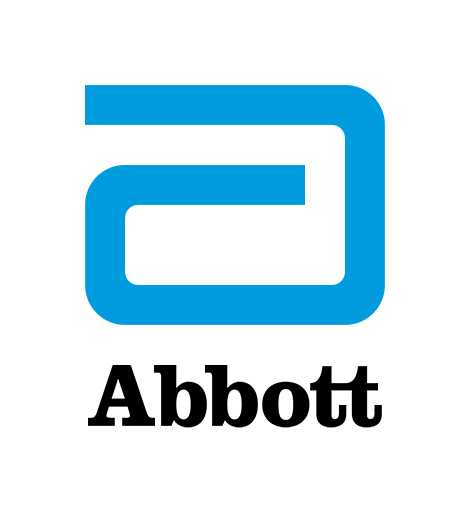The Future of Connected Health Tech is Here
Five things you should know about connected health devices, remote care and their impact on health.

If it feels like the traditional face-to-face healthcare model has rocketed into something far more agile and connected seemingly overnight, you're right.
"We've seen 10 years of progress in the last year with the advent of virtual medicine," said Philip Adamson, M.D., Abbott's chief medical officer, Heart Failure, during an Abbott-led panel at the Wall Street Journal's Future of Everything Festival. The annual event brings together the most revolutionary minds to explore the ideas forming what comes next in a number of areas, including technology and health.
These health gains through virtual connections Dr. Adamson referenced — leading to improved access to medical specialists, better control of chronic health conditions and reduced healthcare costs — could be a silver lining of the pandemic, according to a February 2021 Deloitte Insights report.
"We expect to see increased investments in remote monitoring and patient wearables in the coming years," the report stated.
Key to remote monitoring are connected medical devices. The medical device market was valued at $28.24 billion in 2020 and is expected to reach $94.32 billion by 2026.1
Abbott's strong full-year 2020 growth with its FreeStyle Libre system, 42.6% organic (43.1% reported), as well as strong sales in its other connected health devices, including those for cardiovascular conditions, chronic pain and movement disorders, highlight Abbott's strength in the connected medical device market and the company's potential to expand.
Here are five things you should know about remote care and connected medical devices and their impact on health.*
1. Not Just for the Young
"There's a notion that certain devices or digital is a rarified tool of the young and not the elderly, and that people can't learn to use it. But if you meet the needs of the patient in a way that's more holistic, less judgmental, the patient immediately becomes literate in that digital thing," said Leslie Saxon, M.D., executive director of the Center for Body Computing at the University of Southern California, during Abbott's Future of Everything panel.
2. Boosting Quality of Life
"The safety and assurance patients experience when they're monitored in an implantable sensor situation is remarkable," Dr. Adamson said. "Patients know that their systems are being watched carefully. They know that they can feel safe and that locus of control comes back, burdens of depression start to melt away."
3. Improving Access to Good Health
"With connected technologies, care can be effectively delivered outside hospitals and doctors' offices, and further eliminates some barriers to people who live in locations and have circumstances where healthcare isn't as readily accessible," said Marc Taub, divisional vice president of technical operations and R&D for Abbott's Diabetes Care business.
Fiona Gupta, M.D., a neurologist with Mount Sinai Health System is seeing this firsthand with her patients who have Parkinson's disease thanks to Abbott's first of its kind remote patient-care tech that's compatible with the company's suite of neuromodulation technologies.
"This has been a whole paradigm shift," Dr. Gupta said. "It's not just allowing me to see and assess a patient from a video perspective, but through the virtual clinic, I can make adjustments [to patients' deep brain stimulation devices] and almost deliver a digital prescription instantaneously on a virtual platform."
4. Enhancing Trust in Healthcare
"We've delivered medicine in such a cookbook fashion, 'This dose of drug was shown in trial, so it's right for you,'" Dr. Saxon said. "But some of the [connected health] technologies imbue trust in a patient because the patients realize that these early markers of [a health issue] you can get with digital devices, whether it's diabetes or heart failure, if you act on those, you feel better. You stay out of the hospital. That brings a lot of trust."
5. Integration is the Future
"I think that the future will integrate multiple different sensor data streams, both to the provider and most importantly to the patient, giving them the opportunity to benefit from the data that they produce with the devices that are with them," Dr. Adamson said.
For the full conversation on the future of connected health technology, check out this video.
*Edited for space.
References
1Mordor Intelligence. Connected Medical Device Market – Growth, Trends, COVID-19 Impact, and Forecasts (2021-2026). 2020. https://www.mordorintelligence.com/industry-reports/connected-medical-device-market
IMPORTANT SAFETY INFORMATION
FREESTYLE LIBRE 2
FREESTYLE LIBRE 2 INDICATIONS AND IMPORTANT SAFETY INFORMATION
The FreeStyle Libre 2 Flash Glucose Monitoring System is a continuous glucose monitoring (CGM) device with real time alarms capability indicated for the management of diabetes in persons age 4 and older.
WARNINGS/LIMITATIONS*:
The System must not be used with automated insulin dosing (AID) systems, including closed loop and insulin suspend systems. Remove the sensor before MRI, CT scan, X-ray, or diathermy treatment. Do not take high doses of vitamin C (more than 500 mg per day), as this may falsely raise your Sensor readings. Failure to use the System according to the instructions for use may result in missing a severe low blood glucose or high blood glucose event and/or making a treatment decision that may result in injury. If glucose alarms and readings from the System do not match symptoms or expectations, use a fingerstick blood glucose value to make diabetes treatment decisions. Seek medical attention when appropriate and contact Abbott Toll Free (855-632-8658) or visit * www.freestylelibre.us for detailed indications for use and safety information.
*Please refer to www.freestylelibre.us for the indications and important safety information.

